Towards a healthier Baltic Sea
GEOMAR statement on the new Baltic Sea protection plan
The new Baltic Sea protection plan “Aktionsplan Ostseeschutz 2030“ presented by Minister President Daniel Günther and Environment Minister Tobias Goldschmidt this Tuesday sets the state government’s course for a healthier, cleaner and more biodiverse Baltic Sea. The plan includes strict protection for 12.5 per cent of Schleswig-Holstein’s Baltic Sea and stricter regulations for existing “Natura 2000” areas, targeted measures to promote biodiversity, further steps to reduce nutrient inputs from land as well as active and financial contributions to munitions recovery. Furthermore, there are an environmental education programme and approaches for involving all key stakeholders and concomitant research in the implementation processes.
“We welcome the far-reaching plans and are very happy to continue contributing our knowledge and experience to protect the sea in front of our doorsteps,” emphasises Professor Dr Katja Matthes, Director of the GEOMAR Helmholtz Centre for Ocean Research Kiel and member of the board of the German Marine Research Alliance (DAM). “In the Baltic Sea many changes can already be observed that other marine regions are yet to experience as a result of climate change and other human influences. The action plan that has now been presented will help to improve and preserve its condition. The successful conservation measures in Schleswig-Holstein could also serve as an example for other countries.”
For the implementation process, the researchers particularly recommend to effectively monitor compliance with the protection rules. In order to measure the success of the planned measures and to be able to readjust them, the current status should now be monitored in a more targeted manner. Existing scientific monitoring should consistently be improved. Various research activities, including in protected areas, are essential to address current knowledge gaps and continuously strengthen the basis for effective conservation.
“A successful protection of the Baltic Sea requires joint efforts and a clever balancing of the diverse interests,” says Professor Matthes. “Science is able to provide important information for protection and sustainable use and support a steady increase in our joint ambitions. We all know the value of the Baltic Sea – and we are determined to help preserve it.”
With the monthly measurements at the Boknis Eck station at the entrance to Eckernförde Bay, GEOMAR has been monitoring changes in the Baltic Sea for more than 65 years. Since the beginning of this time series, the temperature at a depth of one metre has already risen by two degrees Celsius. And although nutrient inputs are slowly decreasing, phases of extreme oxygen depletion become more frequent and longer. “Our time series clearly shows how strongly we humans influence our inland sea. We have our finger on the pulse of the Baltic Sea,” explains Dr. Helmke Hepach, environmental scientist at GEOMAR. “This information therefore represents an important contribution to the development of the action plan. It could also be incorporated into future monitoring. In our research, we will test possible applications of artificial intelligence for taking effective protective measures and explore their feasibility together with stakeholders from the region.”
The regular expeditions of GEOMAR and its various partner institutions with research vessel ALKOR also contribute to integrative long-term data series on the state of the Baltic Sea. Twice a year, researchers assess the development of important fish stocks such as cod and herring, including their environmental conditions. “We can clearly see how a combination of stress factors threatens fish stocks and ecosystems in the Baltic Sea. To restore them, it is important to look at the entire food web together with the environmental conditions,” says Dr Jan Dierking, marine biologist at GEOMAR and Fellow of the Björn Carlson Baltic Sea Foundation. “GEOMAR's model simulations then use this extensive data basis to identify solutions – including for political decision-making processes such as Baltic Sea protection.”
The restoration and protection of seagrass meadows, which are included in the action plan, also support biodiversity. At the same time, they help the sea to store carbon dioxide and filter pathogens from the water. “GEOMAR is involved in various seagrass restoration projects and investigates the genetic basis for the ability climate change adaptation,” explains Professor Dr. Thorsten Reusch, Head of the Marine Ecology Research Unit at GEOMAR. “Based on the knowledge where in the Baltic Sea seagrass beds, mussel beds, rocky reefs and other structures promote biodiversity, protected areas can be effectively established. However, it would be important to connect the protected areas and take an international perspective.”
GEOMAR also plays a leading role in research into ammunition contamination in the Baltic Sea. Several projects contribute to the urgently needed progress. Since 2016, possibilities for detecting and mapping munitions at the seafloor have been investigated. Current projects focus on ways to safe recovery and disposal. “Thanks to the Federal Government’s emergency programme and the contributions from the state of Schleswig-Holstein, we will be able to take action this year,” says Professor Dr Jens Greinert, head of the Deep Sea Monitoring working group at GEOMAR and head of the CONcepts for conventional MArine Munition Remediation in the German North and Baltic Sea (CONMAR) research network in the research mission “Protection and Sustainable Use of Marine Areas” (sustainMare) of the German Marine Research Alliance. “As part of CONMAR, we accompany the clearance and refine our knowledge of environmental monitoring. On this basis, concepts for larger-scale operations can then be developed in dialogue with politics and industry. Direct investigations, including biological and chemical analyses, are carried out in parallel and for the emergency programme. This provides us with the necessary data to be able to make a good statement about the environmental impact during and after a major munitions recovery operation.”

Deployment of a plankton net from research vessel ALKOR during a fisheries biology expedition in the Baltic Sea. Photo: Sarah Kaehlert, GEOMAR
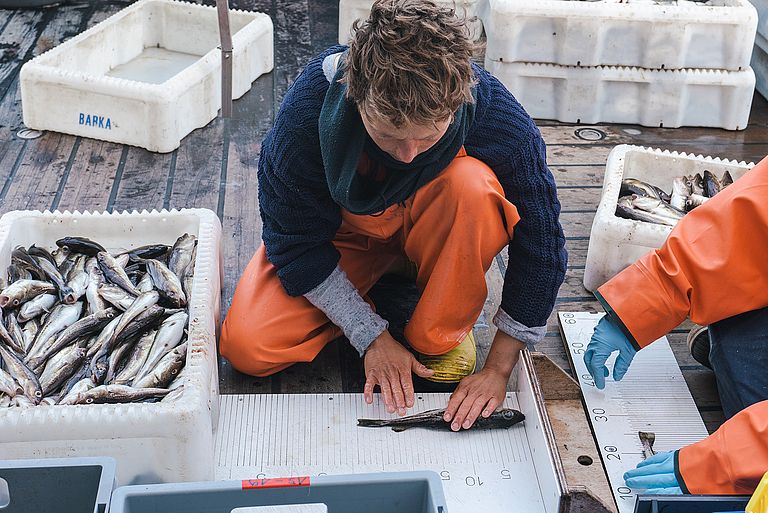
Measuring fish during a fisheries biology expedition in the Baltic Sea. Photo: Sarah Kaehlert, GEOMAR
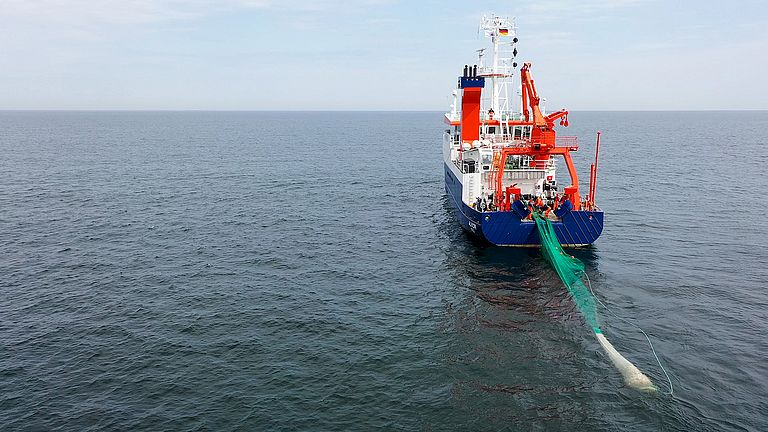
Aerial view of the ALKOR during the AL594 expedition in the Baltic Sea. The cruise continues one of the best available multidisciplinary long-term data series for the Baltic Sea. Photo: Sarah Kaehlert, GEOMAR
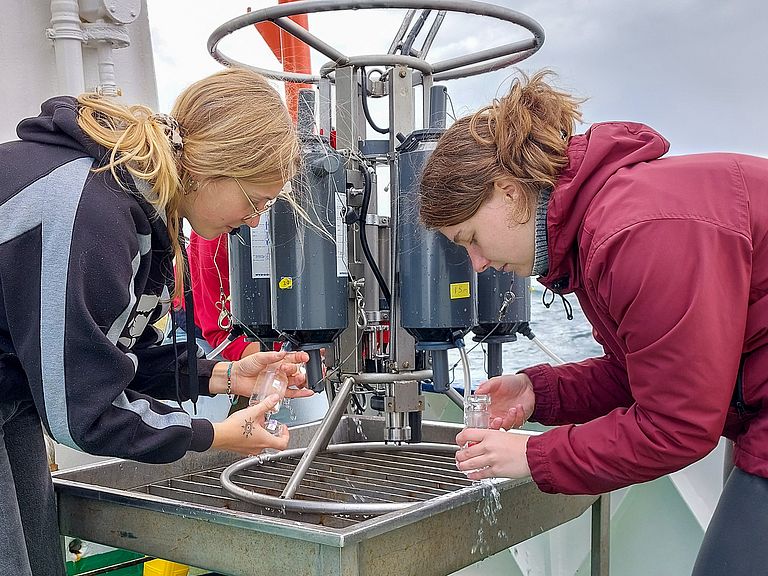
Water sampling at Boknis Eck. A rosette water sampler provides a vertical profile of the water temperature and salinity and brings water to the surface from various depths. Photo: Ilka Thomsen, GEOMAR.
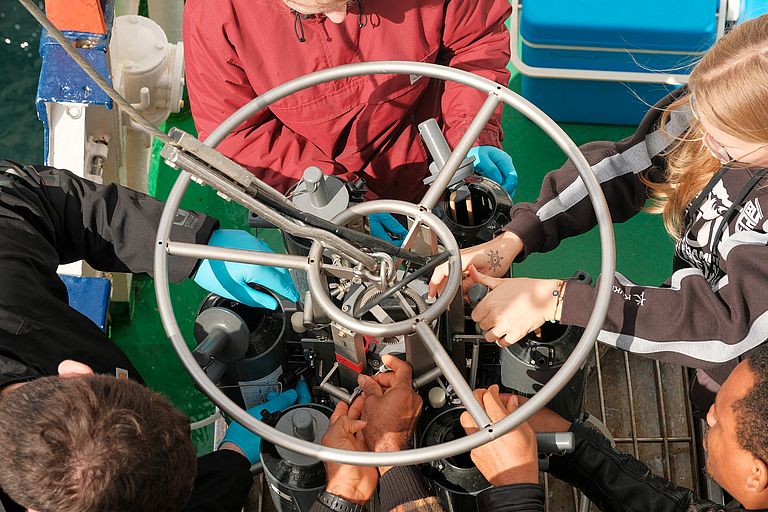
Young scientists on board the LITTORINA prepare the rosette water sampler for another sampling at the Boknis Eck station. Photo: Ilka Thomsen, GEOMAR
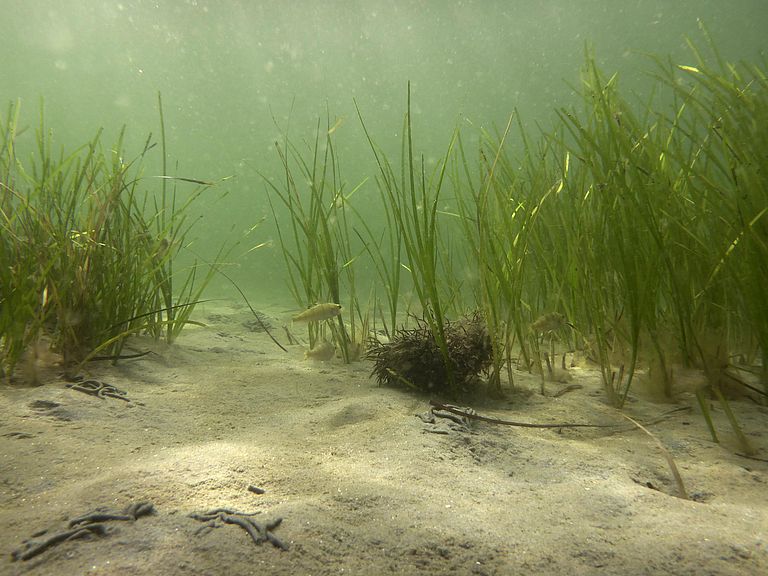
Seagrass meadows like here in Noer in the Baltic Sea are an important habitat in shallow waters. Photo: Jan Dierking, GEOMAR
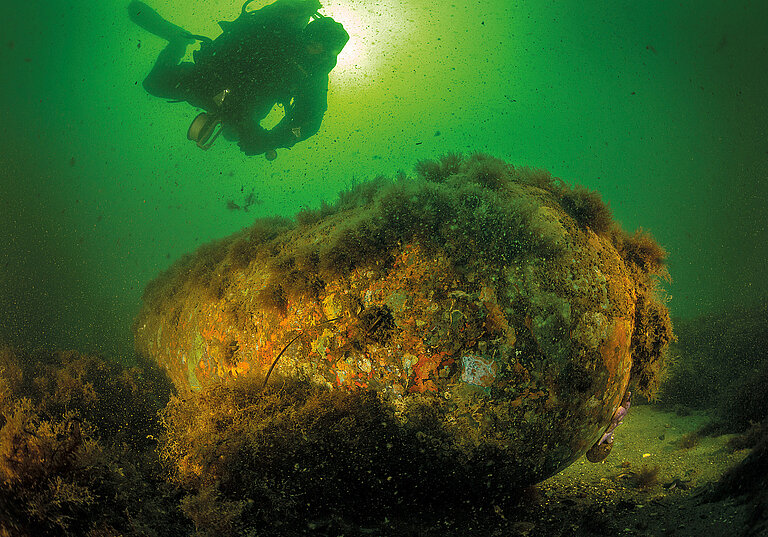
A research diver examines a sea mine from the Second World War in the Kolberger Heide munitions dumping area in the Kiel Outer Fjord. Photo: Christian Howe, www.h2owe.de
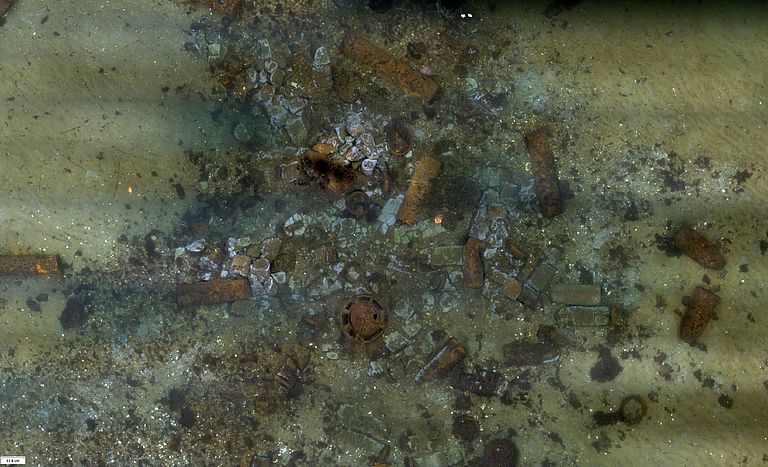
Photo mosaic with old munitions on the sea floor, taken during the AL548 expedition with the help of the AUVs ANTON and LUISE. Photo: AUV team GEOMAR
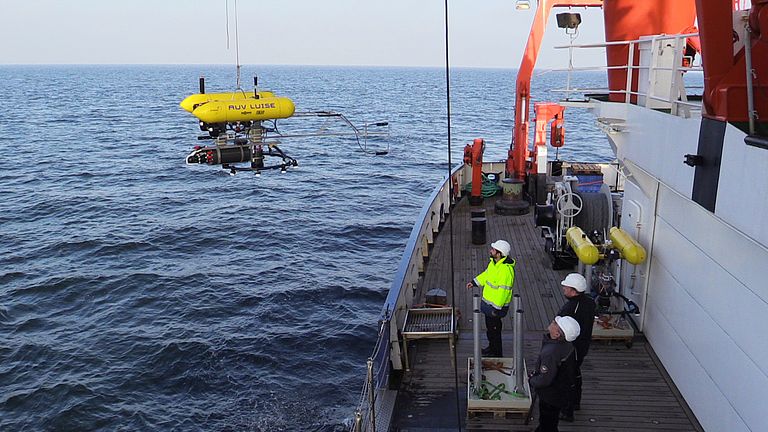
During the ALKOR expedition AL548 in autumn 2020, the autonomous underwater vehicles AUV ANTON and AUV LUISE (pictured) were used to create high-resolution photomosaics of areas with munitions dumps in the Baltic Sea. Photo: Torsten Frey, GEOMAR


